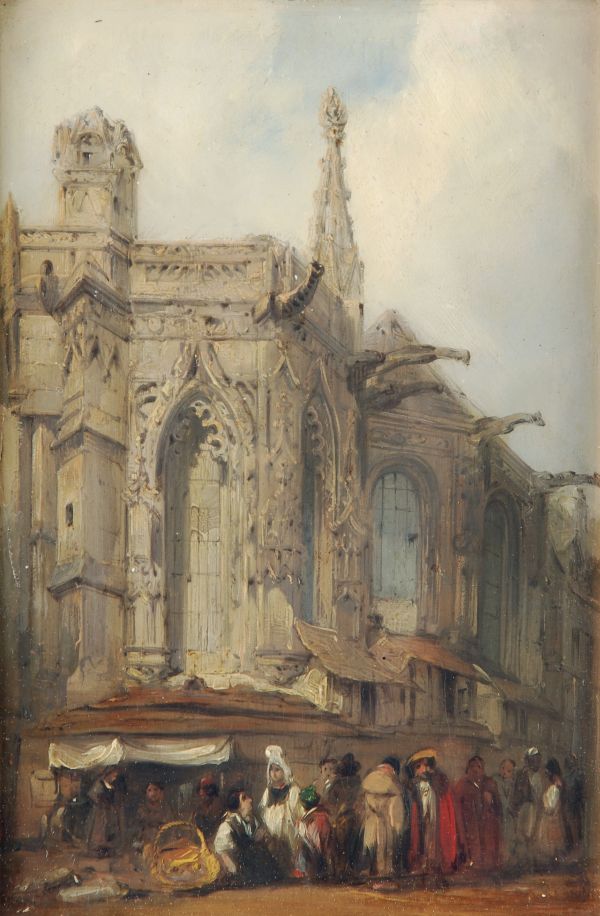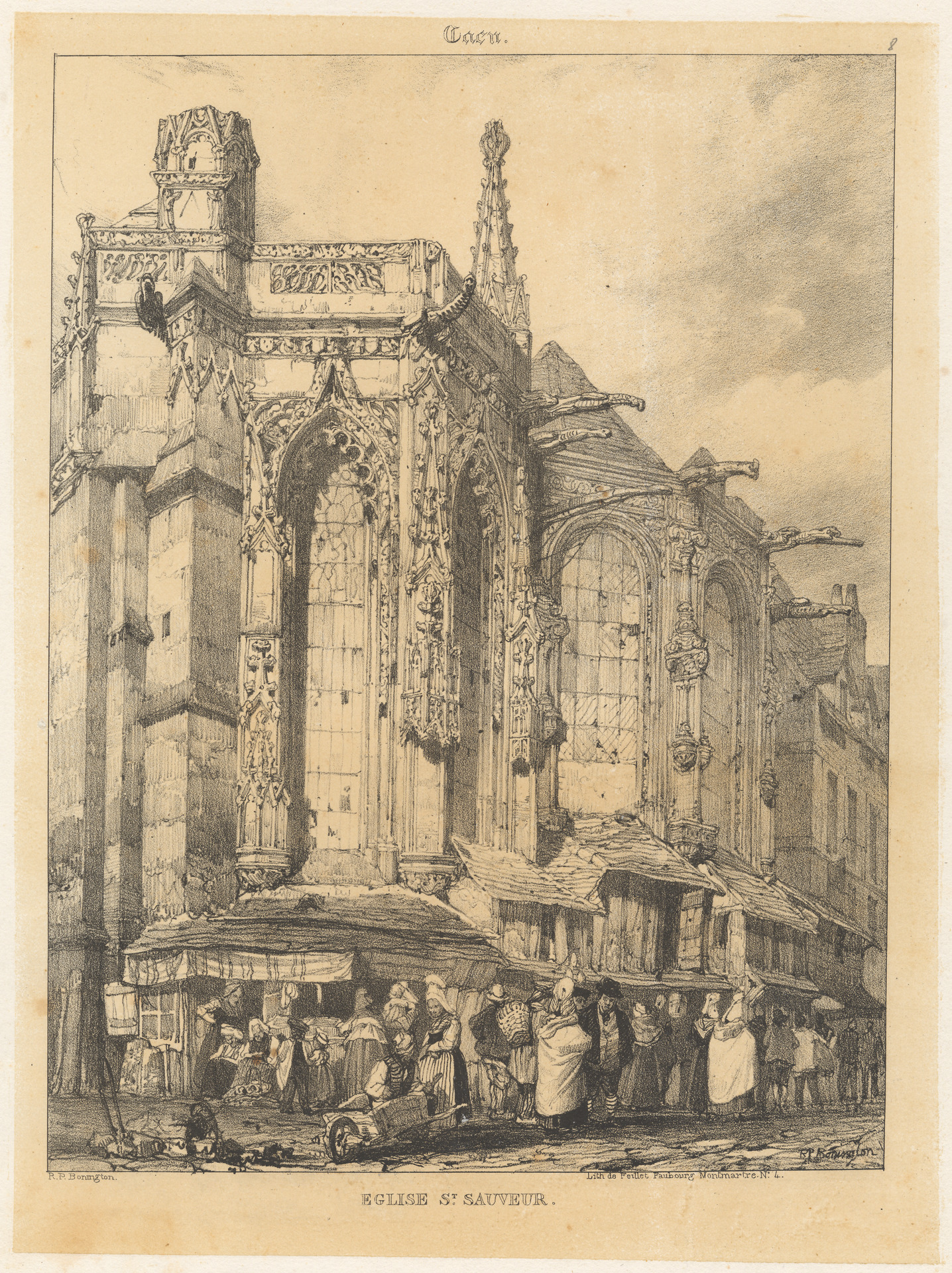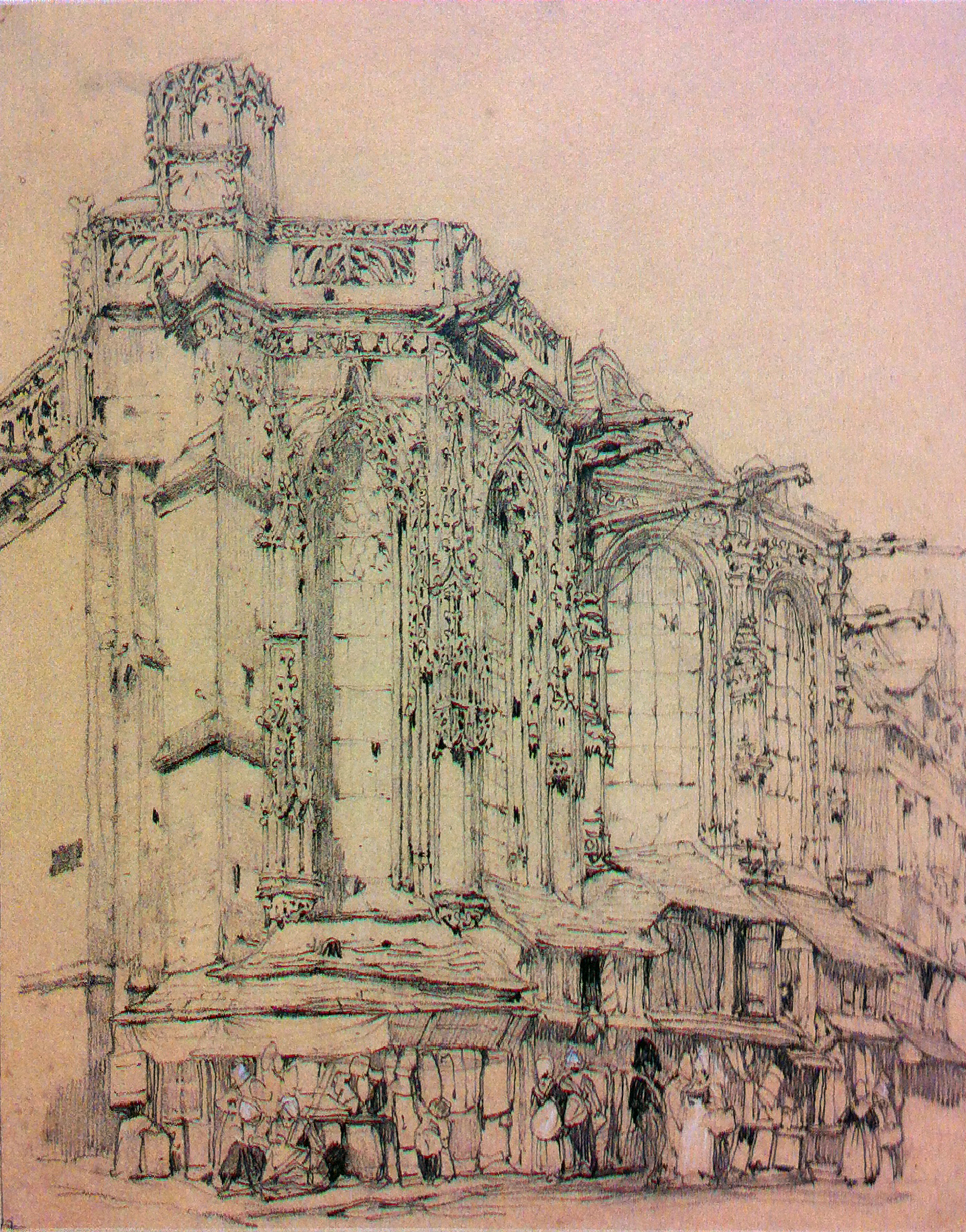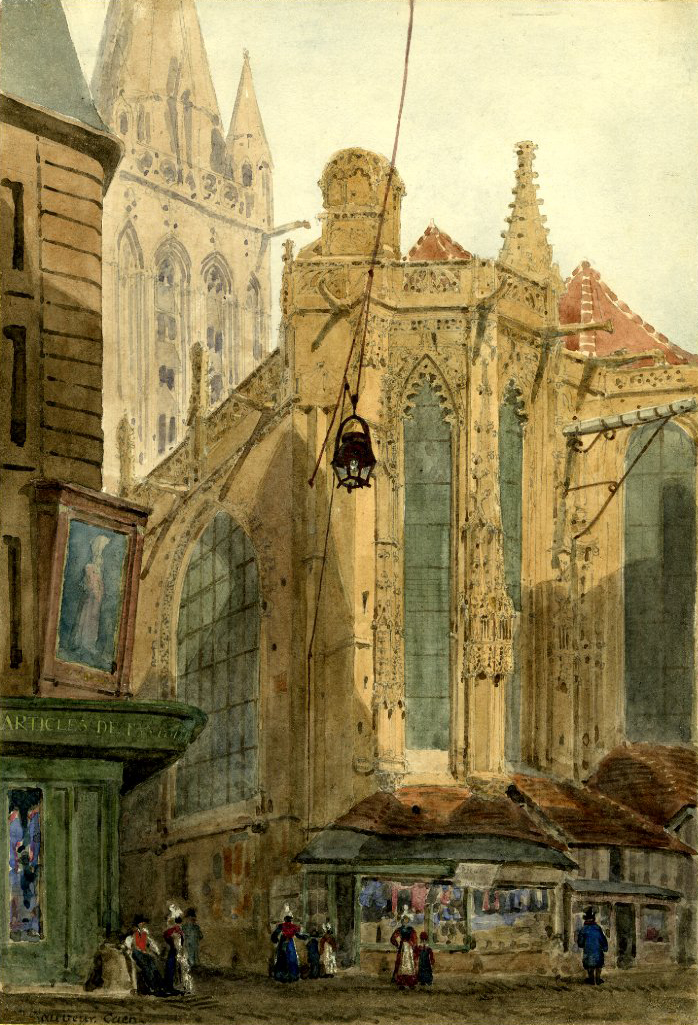 |
Exhibition
|
 |
Exhibition
|

The Église Saint-Sauveur (formerly Notre-Dame-de-Froide-Rue, until
1802) is depicted from the southwest, showing the scene in a clear
afternoon light; a
variety of figures at the base of the building are going about their
various
businesses along the shopfronts abutting the church.
The layout of the picture corresponds closely to the lithograph (below,
left),
framing the high ogival windows of the Gothic apse, set against the
later rounded Renaissance windows of the second apse, and overlooking a bustling market scene.
The lithograph measures 26.6 x 20.0 mm.
There is furthermore a graphite drawing of this same subject (below, right),
with fine white chalk highlights in the foreground, now in the Bowood
Estate collection, Wiltshire, UK, which measures 32.5 x 26.4 mm
(see
Patrick Noon, Richard Parkes Bonington: the Complete Paintings, 2009, Figure 8).
Though all three representations are
quite similar, there are significant variants between
the picture, the lithograph and the drawing that are apparent,
both in the architecture and the foreground, and they seem to be
complementary.
Firstly, are the dimensions: none of them seems to have been conceived as a direct overlay to trace the motif from one medium to another. The picture and the drawing rather seem to be preliminary studies for the published lithograph, the picture for chromatic values, and the drawing for refined detailing. The picture is narrower than the lithograph and the drawing (mostly reducing the bare façade on the left), and extends above, with a greater cloud-billowing sky. The most notable structure lacking in the picture is a sort of mast, protruding southward from the façade beneath the two centermost gargoyles.

Overall, the perspective of the
building is quite similar, though the drawing and the lithograph stretch the structure upwards in a
more towering and aerial vision, the central ogival window progressively elongated, and giving an effect of height.
The fine architectural
features are clear in the drawing; though the distant spire is lacking
(as if Bonington were more interested in rendering the façade), there
are a number of features that are carried over rather precisely
in the lithograph. Some features are absent from the picture, however, notably the strutted mast that protrudes from the façade
The
thronging activity in the foreground that makes up the main part of the lower
composition is markedly different in the three images, and the subject
of a number of variants, as if the artist were seeking an appropriate
solution, hesitating between historical and contemporary figures. 
Some of the
figures in the picture seem rather anachronistic (like those in the pendant picture of the Palais de Justice),
including a monk and a red-cloaked gentleman to the center right, which are
not apparent in the other two. They are replaced respectively by
a white-cloaked figure and a burgher; in the drawing these figures appear as a gendarme and a white-aproned woman.
The pivotal figure in the picture is
the woman with a white bonnet (who has been diminished in the
lithograph, and her unseemingly large basket has been
transfomed into a wheelbarrow), and who is removed from the
drawing, giving a broader, animated effect. Her kneeling cohort is partially carried
over in the lithograph.
The subsidiary figures vary markedly: a woman with arms akimbo on the far left, is carried over in all three, while the two white-cloaked figures in the lithograph, a visual counterpoint to the right, do not yet appear, though there is a preliminary equivalent, with a white apron, to the left of the gendarme.
The scale of the figures also varies,
somewhat larger in the picture and quite smaller in the drawing, with
the lithograph as a midpoint of reference, creating an animated foreground
in the picture that progressively shrinks.
What indeed did the building look like in Bonington's time and how faithful is his rendering?

Bibliography:
François Guillet, L’Invention de la Normandie, seminar given at the Université Populaire de Caen, 2010-11
* cf. http://commons.wikimedia.org/wiki/File:Caen_France_(17).JPG